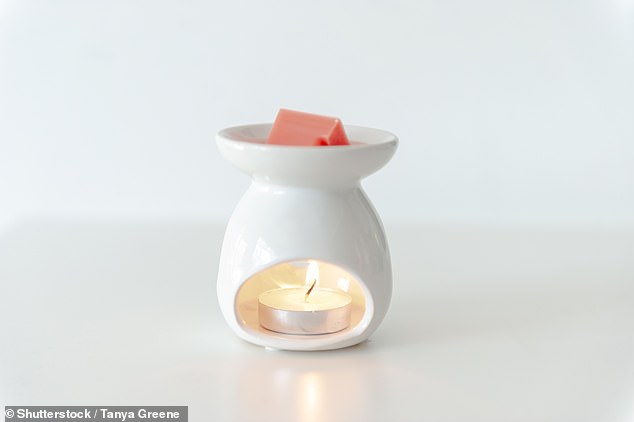If you think of air pollution, it’s likely a vision of smog over a busy city will spring to mind.
But what many people don’t realise is just how bad indoor air pollution can also be.
A new study has revealed that the air inside your home may be even more polluted than outside – with common household products to blame.
In their study, the team from Purdue University warned of the dangers of products including air fresheners, wax melts, floor cleaners, and deodorants.
These everyday products can rapidly fill the air in your home with tiny particles that are small enough get deep into your lungs.
Worryingly, the true impact on your health of breathing in these chemicals remains unclear.
‘A forest is a pristine environment,’ said Nusrat Jung, an assistant professor in Purdue’s Lyles School of Civil and Construction Engineering.
‘But if you’re using cleaning and aromatherapy products full of chemically manufactured scents to recreate a forest in your home, you’re actually creating a tremendous amount of indoor air pollution that you shouldn’t be breathing in.’

A new study has revealed that the air inside your home may be even more polluted than outside – with common household products to blame. Pictured: wax melt

In their study, the team from Purdue University warned of the dangers of air fresheners, wax melts, floor cleaners, and deodorants (stock image)
In their study, the team set out to track how household products generate airborne ‘nanoparticles’ – particles just a few nanometers in size can penetrate deep into the respiratory system and spread to other organs.
The team created a ‘tiny house lab’ with all the features of a typical home, alongside sensors for monitoring air quality.
They then tested various household products, including wax melts, which are typically advertised as ‘non-toxic’ because they are flame-free.
Worryingly, their tests revealed that wax melts actually pollute indoor air at least as much as candles.
The issue is that wax melts and other scented products release chemical compounds called terpenes.
Since wax melts contain a higher concentration of fragrance oils than many other candles, they emit more terpenes.
When they’re released, terpenes rapidly react with oxone in the air, triggering significant nanoparticle formation.
Further tests on essential oil diffusers, disinfectants, air fresheners, and other scented sprays confirmed that these products also generate a significant number of nanoscale particles.

Tests on essential oil diffusers (stock image), disinfectants, air fresheners, and other scented sprays confirmed that these products also generate a significant number of nanoscale particles
‘Between 100 billion and 10 trillion of these particles could deposit in your respiratory system within just 20 minutes of exposure to scented products,’ the team said.
Worryingly, the impact of these nanoparticles on our health remains unclear.
‘Our research shows that fragranced products are not just passive sources of pleasant scents,’ Mr Jung said.
‘They actively alter indoor air chemistry, leading to the formation of nanoparticles at concentrations that could have significant health implications.’
However, it’s not just scented products you need to worry about.
The researchers also found that cooking on a gas stove emits huge amounts of nanoparticles into the air.
During their tests, the team found that just 1kg of cooking oil emits 10 quadrillion particles smaller than three nanometers.
‘At that rate, you might be inhaling 10–100 times more of these sub-3 nanometer particles from cooking on a gas stove indoors than you would from car exhaust while standing on a busy street,’ the team warned.
The researchers hope their findings will highlight the urgent need for further research on the dangers of indoor air pollution.
‘Indoor air quality is often overlooked in the design and management of the buildings we live and work in, yet it has a direct impact on our health every day,’ said Professor Brandon Boor, co-author of the study.
‘With data from the tiny house lab, we aim to bridge that gap—transforming fundamental research into real-world solutions for healthier indoor environments for everyone.’
This article was originally published by a www.dailymail.co.uk . Read the Original article here. .


